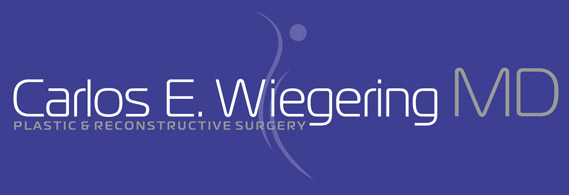Adipose (Fat) Transfer
Rejuvenation, Repair, and Volume Restoration
 Adipose tissue transfer, or a fat injection, describes the process by which adipose (fat) tissue is retrieved or harvested from one or more different regions and injected into another area of the body. After harvesting the fat, it is processed within the closed (Red Head) collector system and syringes (same setting) into purified adipose fat tissue and used for transfer. In some instances, we will process the harvested adipose (fat) tissue with Platelet Rich Plasma (PRP) to supplement the fat transfer (example: for facial rejuvenation, scar revisions, or joint osteoarthritis).
Adipose tissue transfer, or a fat injection, describes the process by which adipose (fat) tissue is retrieved or harvested from one or more different regions and injected into another area of the body. After harvesting the fat, it is processed within the closed (Red Head) collector system and syringes (same setting) into purified adipose fat tissue and used for transfer. In some instances, we will process the harvested adipose (fat) tissue with Platelet Rich Plasma (PRP) to supplement the fat transfer (example: for facial rejuvenation, scar revisions, or joint osteoarthritis).
Adipose (fat) tissue transfer can increase the fullness of the face, breast, buttocks, and correct volume deformities in different parts of the body. These volume deformities can be developmental, congenital, the result of atrophy, or redistribution or accumulation. This procedure can plump and enhance the different body structures. For example, adipose (fat) tissue can be transferred as micro fat tissue transfers to the peri-orbital eye region, the cheeks, the mandible area, or even the lips.
Surgeons who perform facial rejuvenation procedures have long recognized the importance of volume enhancement. The primary manifestation of the loss of subcutaneous tissue, especially fat tissue, which directly contributes to laxity of skin.
Purpose: Rejuvenate, Repair and Volume Restoration
The purpose of fat transfer is abundantly clear. Over time, the skin begins to age, becoming increasingly thin. As a result of this, along with the loss of volume, the skin can appear to sag and can look aged and withered. When adipose (fat) tissue is injected, it plumps the area and creates a semblance of youth. Not only can adipose fat transfer mitigate the appearance of wrinkles by filling in the grooves, but it can also increase the level of circulation in parts of the body. Furthermore, plastic surgeons have developed a means by which they can purify and refine the fat so that it looks more suitable once injected into the site.
Adipose (fat) tissue transfer can correct or repair damaged, scared, and aged tissue through the development of increased blood flow, skin hydration, and cellular repair. The adipose tissue is highly vascularized and the fat cells are in direct contact with the adjacent capillary vessels.*
*Introduction to human histology. Laboratory tutorial online © web site author – D. Howard Dickson. Web site organizer – Stephen Whitefield. Dalhousie University
Benefits
There are a number of benefits associated with micro fat tissue transfers, including restoring facial volume for a more alluring appeal such as the peri-orbital area for a more youthful look and the cheek region for a plumper and younger-looking appearance. Adipose (Fat) tissue can even be used to rejuvenate facial features and to serve as a type of filler. As the aging process continues to progress, the possibility of a fat transfer becomes a very good option. Instead of using invasive surgical procedures to nip and tuck, a simple adipose (fat) tissue injection may do the trick for someone. In this 21st century, fat injections are actually an essential component of a facelift surgery.
Considerations
Fat injections are not permanent, so this is something you must consider before having the procedure done on your behalf. While much of the injected fat does endure over time, some fat cells may degrade eventually. Therefore, before you can make an initial judgment about your fat injection procedure, it is important to wait a couple of weeks so that you can evaluate the final results.
Facial Adipose (Fat) Transfer Procedure
A patient receiving adipose (fat) injections can do so with local anesthesia or under light sedation. The plastic surgeon uses large sterile collecting devices or small syringes (Red Head large canister / Jordy Small System) to harvest the fat in areas such as the abdomen, periumbilical region, lower abdomen, pubic region, inner thighs, or outer thighs. Once the surgeon has obtained the desired amount of fat, the surgeon embarks upon a process known as decanting and processing with the aid of a centrifuge. After this essential step, the fat is transferred to the desired site of the body.
Brazilian Butt Lift
This surgical procedure is basically an adipose (fat) tissue transfer from the patient’s own body, so it is the most natural way to reshape and enhance the patient’s buttocks. By using the fat from your unwanted areas, such as the abdomen, hips, and flanks, the results will be total body sculpting not only of your abdomen, hips, and flanks but also of your buttocks in the same procedure.
This procedure involves adipose (fat) extraction or harvesting with a liposuction technique followed by same site processing of the fat and immediate reinjection. It is typically performed on an outpatient basis under local anesthesia with a tumescent solution and IV sedation or general anesthesia. In addition to the numbness obtained with the tumescent solution to help in the immediate postoperative recovery, the bleeding is totally controlled, making the fat harvesting easier through a small 3 mm cannula.
The procedure is designed to fill the upper quadrant of your buttocks so that the butt appears lifted and perky. The average amount of fat transfer is 600 cc.
Adipose (Fat) Transfer vs. Fillers
Many individuals have pondered how fat injections distinguish themselves from hyaluronic acid dermal fillers and others. Fat transfer involves a more extensive process because the surgeon must perform the harvesting (similar to a minor liposuction) and make the proper consistency before injecting it. Furthermore, fat injections can be done in larger quantities to deliver much larger volume replacement. Other dermal fillers may be limited with regards to cost and technical feasibility.
Autologous fat transplantation has been attempted for over a century with varying degrees of success, but more recent techniques have provided more predictable, reproducible, and even permanent results. Fat is an ideal tissue filler substance because it is living tissue and because it is from the patient’s own body, making it non-allergenic.

